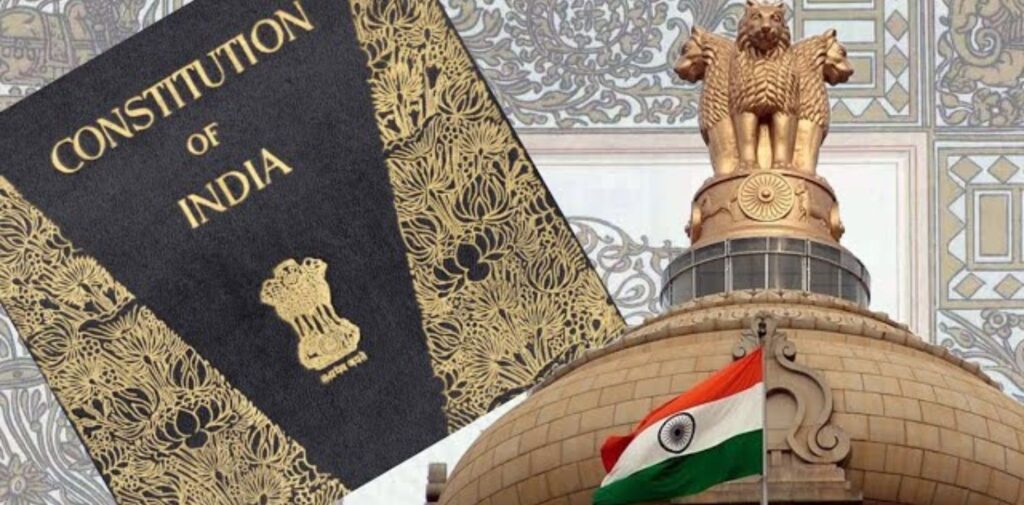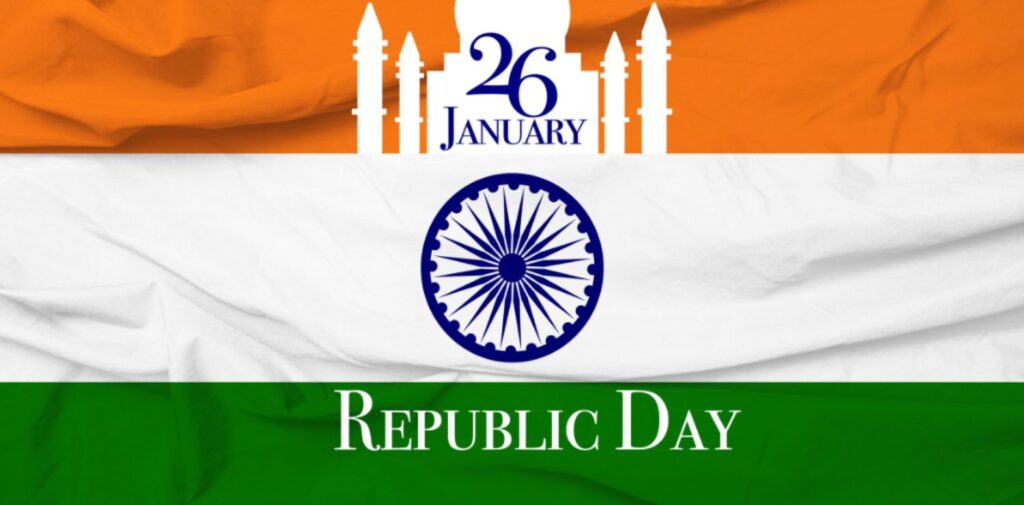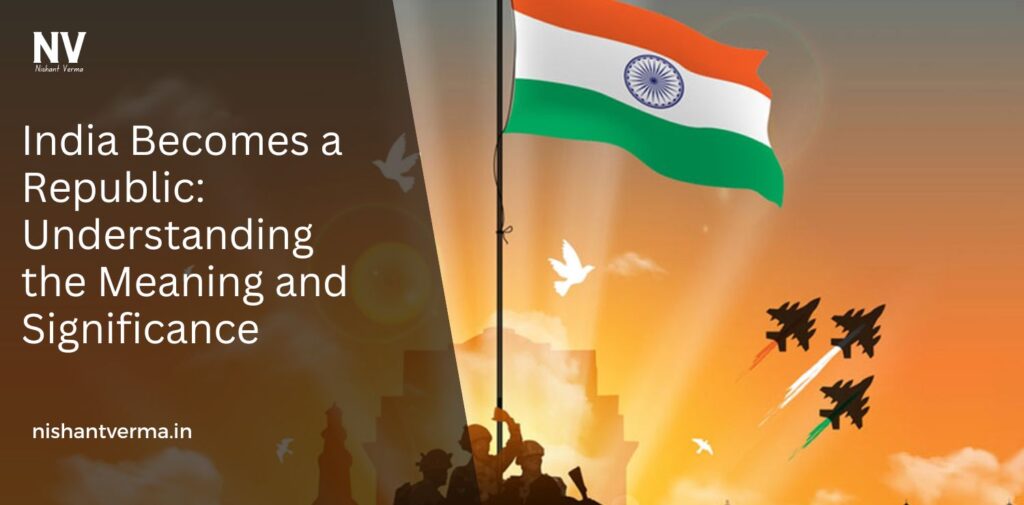On January 26, 1950, India Becomes a Republic, marking a monumental event in the country’s history. This day is celebrated every year as Republic Day, a national holiday filled with patriotic pride, parades, and events. But what exactly does it mean for a country to become a republic, and why is January 26 such a significant date for India?
In this article, we’ll explore when and how India became a republic, what the term “republic” means in the Indian context, and the importance of this shift in India’s journey towards becoming a sovereign and democratic nation.
India’s Journey to Becoming a Republic
India’s path to becoming a republic was shaped by decades of struggle for independence, political deliberations, and the efforts of countless leaders. To understand why January 26, 1950, was so important, we need to look at the events leading up to it.
The End of British Rule
India gained independence from British colonial rule on August 15, 1947. The end of British rule, however, did not immediately make India a republic. On that day, India became a dominion within the British Commonwealth. This meant that, while India was free, it still recognized the British monarch, King George VI, as its head of state, and India’s political and legal system was largely based on the British model.
India’s first Prime Minister, Jawaharlal Nehru, and other leaders of the Indian National Congress had a clear vision of making India a truly sovereign republic. This would mean that India would no longer have a monarch as its head of state. Instead, the country would be governed by elected representatives, and its laws and governance would be entirely independent of British control.

Need for a Constitution
To fully transition into a republic, India needed a Constitution — a set of written laws that would define how the country would be governed. The drafting of the Indian Constitution was one of the most significant tasks faced by the newly independent nation.
In 1946, the Constituent Assembly was formed, comprising elected representatives from different regions and communities of India. The assembly’s task was to draft a constitution that would reflect the values of democracy, justice, equality, and freedom. The process took almost three years, as the assembly carefully considered issues such as the structure of the government, the rights of citizens, and the role of different states in the union.
On November 26, 1949, the Constituent Assembly finally adopted the Indian Constitution. However, the constitution would come into effect only on January 26, 1950 — a date that was chosen to honor the memory of Purna Swaraj Day (Complete Independence Day), which had been celebrated on January 26, 1930, as a call for full independence from British rule.
What Does “Republic” Mean?
To understand India’s transformation into a republic, it’s important to understand what the term “republic” means in the context of a country’s political system. The word “republic” comes from the Latin term “res publica,” which means “public matter” or “the people’s business.” In simple terms, a republic is a form of government in which the country’s leaders are elected by the people and are accountable to them.
In a republic, the head of state is not a monarch or hereditary ruler. Instead, it is an elected individual, and this position is often either a President or a Prime Minister, depending on the country’s political structure. The key features of a republic include:
- Sovereignty of the People: In a republic, the ultimate authority lies with the people. This means that elected representatives, including the head of state, serve at the will of the people.
- Elected Head of State: Unlike a monarchy, where the head of state is usually a king, queen, or emperor, a republic elects its head of state through democratic processes. In India’s case, the President is elected, not inherited.
- Rule of Law: A republic operates under a system of laws, often written in a constitution, that all citizens and officials are bound by, ensuring that no one is above the law.
- Democratic Principles: A republic is based on democratic principles such as equality, freedom, and justice. Citizens are allowed to vote, participate in elections, and have their voices heard in shaping the country’s future.

Republic India: The Role of the Constitution
When India became a republic on January 26, 1950, it was the culmination of years of struggle and deliberation. The Indian Constitution is the backbone of the Indian republic and defines the country’s political and legal framework. The Constitution establishes the country as a sovereign, socialist, secular, democratic republic.
Here’s a closer look at the core principles and features of the Indian Constitution that make India a republic:
- Sovereign: India’s sovereignty means that the country is free to make its own laws, control its resources, and conduct its own foreign policy without interference from outside forces, including Britain. This was a significant shift from India’s previous status as a British colony.
- Socialist: The Constitution committed India to the idea of social justice. The word “socialist” was added to the preamble in 1976, but the idea of promoting economic equality, reducing poverty, and providing social services like education and healthcare was always part of India’s constitutional vision.
- Secular: India’s Constitution guarantees that the country would not favor any religion. It ensures religious freedom for all citizens and prohibits discrimination based on religion. This is particularly important in a country like India, which is home to many different religions and cultures.
- Democratic: India is a democracy, meaning that citizens have the right to participate in the governance of the country. This is achieved through regular elections, where people vote for their leaders. The Constitution ensures that every adult citizen, regardless of gender, caste, or religion, has the right to vote.
- Republic: As a republic, India has no monarch or hereditary ruler. The head of state is the President, who is elected by the people’s representatives, namely the Electoral College. The President’s powers are largely ceremonial, with most executive powers being vested in the Prime Minister and the Cabinet.

Significance of January 26: Republic Day
January 26 holds a special place in India’s history because it is the day when the Indian Constitution came into effect, and India officially became a republic. This transition was symbolic in many ways:
- End of Colonial Legacy: India’s transition to a republic marked the end of the colonial system that had governed India for over two centuries. The British monarch was no longer India’s head of state, and the country now had its own Constitution and government.
- Empowerment of the People: Becoming a republic meant that the people of India were now the true rulers of their own destiny. The Constitution granted the people the right to elect their leaders and participate in the democratic process.
- Inspiration for Other Nations: India’s move to a republic in 1950 was an inspiration to many other former colonies around the world. India’s successful transition from a British dominion to a republic demonstrated that a peaceful, democratic transition was possible even in a nation with a long history of colonial rule.
The Role of the President
As India became a republic, it needed a head of state to represent the nation. The position of the President was created in the Constitution, and the first President of India, Dr. Rajendra Prasad, took office on January 26, 1950. The President’s role is largely ceremonial, with executive powers resting with the Prime Minister and the Cabinet. However, the President holds significant authority in times of national crisis or political instability, and their duties include:
- Appointing the Prime Minister and Cabinet members.
- Giving assent to laws passed by Parliament.
- Representing India in diplomatic matters.
While the President is the head of state, India’s system of government is parliamentary, meaning the Prime Minister is the actual head of government and holds executive powers.
Conclusion: India Becomes a Republic
India’s transition to a republic on January 26, 1950, marked a defining moment in the country’s history. It signified India’s full independence, not just from British rule, but also from the idea of monarchy and colonial governance. The adoption of the Indian Constitution created a democratic framework where the people, rather than a monarch, were the true rulers of the country.
Today, Republic Day serves as a reminder of India’s commitment to its democratic values, its diverse culture, and its sovereignty. It is a day to celebrate the country’s achievements and to reflect on the journey that made India the republic it is today.




